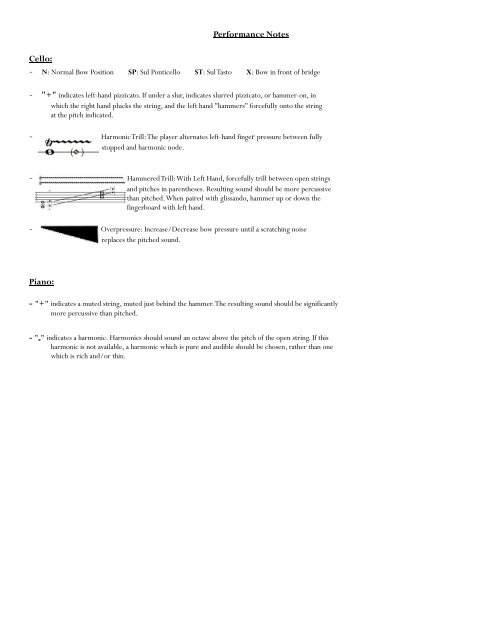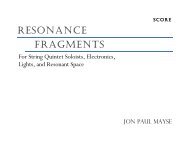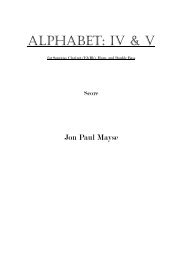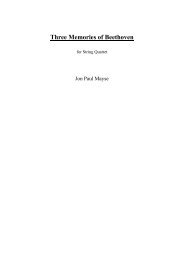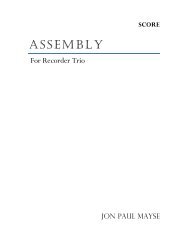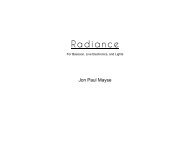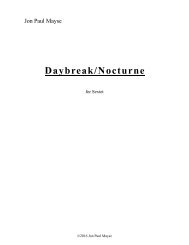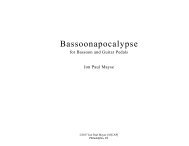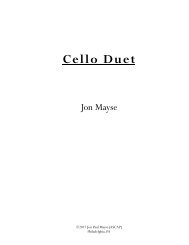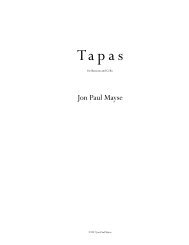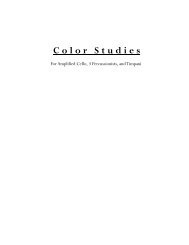Sonata for Cello and Piano
The Sonata for Cello and Piano is a dialogue between the two instruments. After a short exposition and a piano monologue, the cello and piano engage in a dialogue. The cello begins each sequence with a recall of the opening melody, a series of fourths and half-steps, which is soon countered by the entrance of the piano on a different material. Each sequence also explores a different texture/timbre.
The Sonata for Cello and Piano is a dialogue between the two instruments. After a short exposition and a piano monologue, the cello and piano engage in a dialogue. The cello begins each sequence with a recall of the opening melody, a series of fourths and half-steps, which is soon countered by the entrance of the piano on a different material. Each sequence also explores a different texture/timbre.
You also want an ePaper? Increase the reach of your titles
YUMPU automatically turns print PDFs into web optimized ePapers that Google loves.
Per<strong>for</strong>mance Notes<br />
<strong>Cello</strong>:<br />
- N: Normal Bow Position SP: Sul Ponticello ST: Sul Tasto X: Bow in front of bridge<br />
- "+" indicates left-h<strong>and</strong> pizzicato. If under a slur, indicates slurred pizzicato, or hammer-on, in<br />
which the right h<strong>and</strong> plucks the string, <strong>and</strong> the left h<strong>and</strong> "hammers" <strong>for</strong>cefully onto the string<br />
at the pitch indicated.<br />
- Harmonic Trill: The player alternates left-h<strong>and</strong> finger pressure between fully<br />
stopped <strong>and</strong> harmonic node.<br />
- Hammered Trill: With Left H<strong>and</strong>, <strong>for</strong>cefully trill between open strings<br />
<strong>and</strong> pitches in parentheses. Resulting sound should be more percussive<br />
than pitched. When paired with gliss<strong>and</strong>o, hammer up or down the<br />
fingerboard with left h<strong>and</strong>.<br />
- Overpressure: Increase/Decrease bow pressure until a scratching noise<br />
replaces the pitched sound.<br />
<strong>Piano</strong>:<br />
- "+" indicates a muted string, muted just behind the hammer. The resulting sound should be significantly<br />
more percussive than pitched.<br />
- "o" indicates a harmonic. Harmonics should sound an octave above the pitch of the open string. If this<br />
harmonic is not available, a harmonic which is pure <strong>and</strong> audible should be chosen, rather than one<br />
which is rich <strong>and</strong>/or thin.


